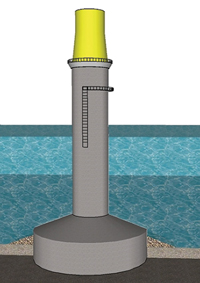Investigating the Feasibility of Self-Buoyant Concepts
 The gravity concept, originally implemented in the Oil & Gas sector, is based on utilising the dead weight of the foundation material (typically concrete) to generate the restoring forces required to resist the high lateral loads and overturning moments resulting from the service loads. However, the significant dead weight of the foundation usually results in costly transportation and installation operations, given the high charter rates of the required vessels, lifting cranes and infrastructures. Achieving the EU targets for the levelised cost of energy (LCOE) of offshore wind encourages development of alternative approaches with cost reduction potentials. Several gravity concepts have been proposed in recent years, to attain a self-buoyant gravity base foundation, and thereby minimise the need for costly marine operations. This article reports a parametric study that investigates the feasibility and cost-benefit of such concepts, in terms of performance, intermediate stability and their impact on the overall cost of foundations.
The gravity concept, originally implemented in the Oil & Gas sector, is based on utilising the dead weight of the foundation material (typically concrete) to generate the restoring forces required to resist the high lateral loads and overturning moments resulting from the service loads. However, the significant dead weight of the foundation usually results in costly transportation and installation operations, given the high charter rates of the required vessels, lifting cranes and infrastructures. Achieving the EU targets for the levelised cost of energy (LCOE) of offshore wind encourages development of alternative approaches with cost reduction potentials. Several gravity concepts have been proposed in recent years, to attain a self-buoyant gravity base foundation, and thereby minimise the need for costly marine operations. This article reports a parametric study that investigates the feasibility and cost-benefit of such concepts, in terms of performance, intermediate stability and their impact on the overall cost of foundations.
By Dr Azadeh Attari and Dr Paul Doherty, GDG, Ireland










